Are you concerned about the quality of the raw materials your manufacturer is using?
Low-quality materials make your products more likely to break or wear out prematurely — and if they contain hazardous substances, they might end up violating federal safety standards.
For example, two months ago, DownEast Home & Clothing, a lifestyle brand based in Utah, had to recall 1,600 folding mattresses made by their supplier in China, because they failed to meet federal flammability standards and posed a fire hazard.
If your products get recalled the way these mattresses did, it takes time and money to resolve the situation, and it can negatively affect your reputation. If they break easily because of raw material quality, you’re likely to see increased returns and negative customer reviews.
So how do you ensure that the factory is using high-quality, safe, and compliant materials?
Table of Contents
Here are 4 Steps to Help You Ensure the Quality of Raw Materials
These steps are not necessarily sequential, and they’re not all required — but each one should be considered as you’re thinking about how to control raw material quality.
Step 1 – Give Your Factory Material Specifications
You can’t expect your supplier to use a certain quality of materials — whether it’s a specific steel grade, type of plastic, or something else — if you don’t provide them with clear specifications.
A lack of specifications is one of the major reasons importers get let down by their suppliers, and it can contribute to the problem of quality fade.
We’ve seen companies spend thousands of dollars to scrap and rework products that didn’t meet their standards. This can often be avoided by ensuring that your specifications are as accurate and detailed as possible.
Consider this comment we got from Frank Mils on LinkedIn.
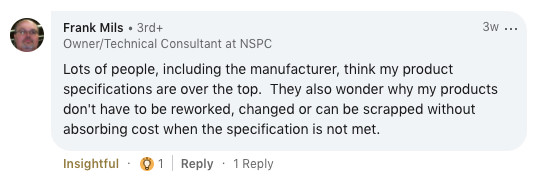
Your specifications should include all relevant details about the product, such as its size, shape, measurements, components, materials, and colors. We’ve provided more information about product specifications in this article.
The point is that if you want your supplier to meet a certain standard, you have to specify exactly which materials you expect them to use. Otherwise, it is much more difficult to hold them accountable.
The next step is to conduct supplier audits.
Step 2 – Conduct an Audit on Your Supplier’s Quality System
Your manufacturer should have quality control procedures in place at every point in the manufacturing process — including the inspection of raw materials.
A third-party quality control company (like Insight) can go to the manufacturing facility to conduct a quality audit.
An audit is different from a product inspection in that it is intended to give you a big picture view of how the factory operates, as opposed to checking the quality of the products in a specific shipment.
At the factory, the auditor goes through a series of checks, and an important part of these quality audits is to ensure that there are documented processes in place for verifying raw material quality. They will also look at records of the factory’s receiving inspections to see if the processes are being followed.
Conducting an audit can be a good idea if you’re thinking of doing business with a new supplier, or if you’ve been having issues with a supplier and want to get to the root of the problem.
The checks the auditor performs are all listed on an audit checklist. If you’d like to see an example of a factory audit checklist, we have one here.
The next step is to conduct lab tests.
Step 3 – Conduct Lab Tests on High-Risk Raw Materials
When it comes to regulatory compliance, you need to conduct lab tests to ensure that all relevant standards are being met.

Related Post: Quality Control Plans: What Do You Need to Include?
If your products require a General Certificate of Conformity (GCC) or Children’s Product Certificate (CPC) in the US — or a similar certificate in another country — you have likely conducted lab tests in order to produce these certifications.
And if you are selling products in California, you are undoubtedly familiar with Cal Prop 65 and may have done some amount of testing to ensure compliance.
Not every batch of raw materials needs to be lab tested, but some are higher risk than others and may warrant more frequent testing.
For example, incoming paint should be tested to ensure it is lead-free and fabric should be tested to ensure it meets flammability and colorfastness requirements.
You can ask your supplier to provide a testing certificate for each batch to ensure they have verified its compliance. And you can periodically have your own tests conducted with a testing lab (Insight has trusted testing partners that we work with) so that you are not always relying on the supplier to authenticate their own goods.
Another thing you might think about is conducting third-party raw materials inspections.
Step 4 – Conduct Raw Materials Inspections on an As-Needed Basis
Aside from lab tests and audits, third-party pre-production inspections are an option as well.
These are different from pre-shipment inspections and during production (DUPRO) inspections, in that they are conducted before production even starts. An inspector can go to the factory to verify that the raw materials received match the specifications you agreed to with your manufacturer.
While not as common as other types of inspections, these can be done in special situations — for example, when working with a new supplier or when you are concerned that your existing supplier might be cutting corners.
When an unexpected quality problem occurs, it can be frustrating. To learn more about how to deal with these situations, we recommend downloading the following guide.
Free Guide: What to do When Things Go Wrong
When a quality problem happens – and they will – how you approach the problem makes all the differences in successfully squelching it.
Learn how to deal with the problem at hand, see potential quality gaps throughout your supply chain, and take proactive measures to avoid future problems.

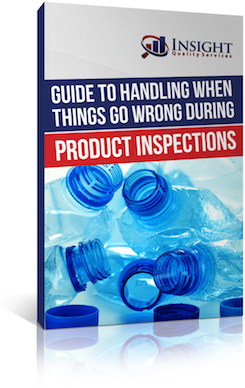
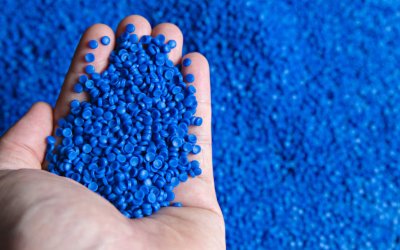
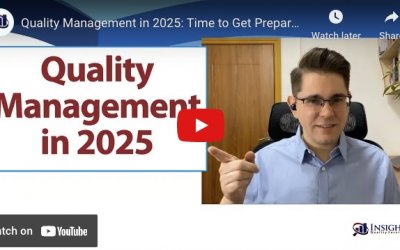
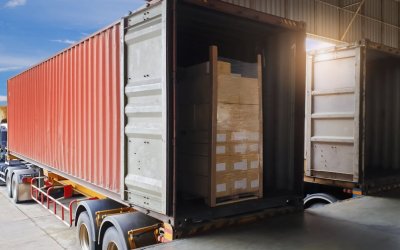
Sirs,
I need to verify products (lysine and methionine) before they are conteinered for its sending to Ecuador.
Please, let me know if you could perform the necessary analisis (your list of services and which of them you suggest to do), time and prices.
Kind regards and thank you in advance.
Hi Raúl,
I have forwarded your message to our inspection & testing team. For any future service inquiries, please email info@insight-quality.com.
Best Regards,
Billy Miner